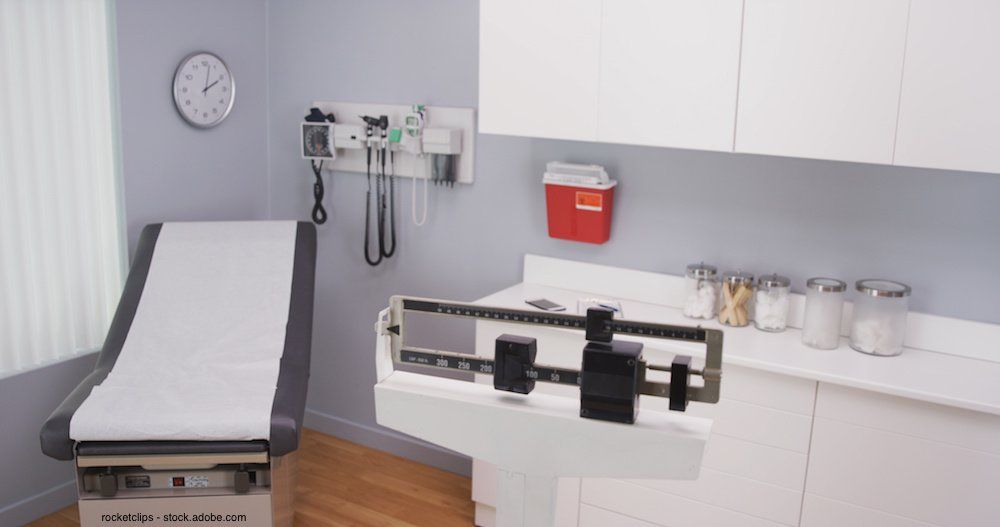Publication
Article
Urology Times Journal
Trial supports combined behavioral, medical approach to treating OAB
Author(s):
Results of a randomized controlled clinical trial provide a rationale for urologists to integrate behavioral treatments into their practice for managing men with lower urinary tract symptoms of overactive bladder, according to the study’s authors.
rocketclips - stock.adobe.com

Results of a randomized controlled clinical trial provide a rationale for urologists to integrate behavioral treatments into their practice for managing men with lower urinary tract symptoms (LUTS) of overactive bladder (OAB), according to the study’s authors.
The findings were published in JAMA Internal Medicine (Jan. 13, 2020 [Epub ahead of print]). The study, which had a two-stage, three-arm design, assigned men to 6 weeks of behavioral therapy alone, drug therapy alone, or combined therapy. In the second stage, a combined approach was used in all groups.
Also see: Training era linked to TURP outcomes
Change in 24-hour voiding frequency documented in bladder diaries was assessed as the primary outcome, and it decreased significantly from baseline in all three groups. Combined therapy had the best results overall (–3.6, 30.5% change), and its benefit was significantly greater compared with drug therapy alone (–1.5, 12.7%) but not compared with behavioral therapy by itself (–2.9, 24.5%). Behavioral therapy alone also had the best safety profile.
“Behavioral treatments are recommended as a first-line therapy for OAB symptoms. Most physicians do not provide them, but they can be implemented by nurses, nurse practitioners, and physical therapists,” said lead author Kathryn L. Burgio, PhD, professor of medicine, division of gerontology and geriatric medicine, University of Alabama School of Medicine, Birmingham.
“Based on our findings, physicians might consider giving patients more treatment options and beginning with behavioral therapy.”
Next: Better outcomes seen vs. drug therapy aloneBetter outcomes seen vs. drug therapy alone
Co-author Stephen R. Kraus, MD, told Urology Times, “When treating men with LUTS using a stepped approach to combined therapy, we believe it is reasonable to begin with behavioral therapy alone.
“Not only does behavioral therapy have a better side effect profile, but based on our study, it yields better 6-week outcomes than drug therapy such that results are achieved more quickly than starting with drug alone,” added Dr. Kraus, professor and vice chairman of urology, University of Texas Health Science Center at San Antonio.
The study was designed to investigate whether combined therapy would produce better clinical outcomes than behavioral therapy alone or drug therapy alone for LUTS associated with OAB considering that the two interventions differ in their mechanism of action.
Read: Low-fat diet linked with lower testosterone level
“Both behavioral and drug therapy are safe and effective for improving these symptoms and are often used as first-line therapies, but because these symptoms have such a negative effect on quality of life and considering that many men are not completely cured with initial therapy, we thought it was important to investigate the potential benefit of initial combined therapy and to study approaches to using them in combination,” said Dr. Burgio.
It enrolled community-dwelling men age 40 years and older. A total of 204 men were randomized. Mean voids per 24 hours at baseline were 11.7 or 11.8 across all treatment groups.
In the study, drug therapy consisted of sustained-release tolterodine (Detrol LA), 4 mg once daily, and tamsulosin (Flomax), 0.4 mg once daily. Behavioral therapy focused on strategies for postponing urination, controlling urgency, and preventing urge incontinence. It combined pelvic floor muscle training and use of daily bladder diaries to track increasing voiding intervals and enhance awareness of bladder habits.
At the end of the second stage, improvements from baseline voiding frequency remained greatest in the group that began with combined therapy, but there were no significant differences between groups. Mean percentage change from baseline ranged from 27.1% in the group that started with drug therapy alone to 32.2% in the group starting with combined therapy.
During the first study stage, adverse effects were reported more often in groups receiving drug therapy. Among men receiving behavioral therapy alone, 86% reported no adverse effects or no bothersome adverse effects. Approximately one-third of men in both the combined therapy and drug therapy groups reported no adverse effects or bothersome adverse effects.
Dr. Kraus has received consulting fees from Allergan, Astellas Pharma, and Medtronic and speaking/teaching fees form Astellas Pharma.































